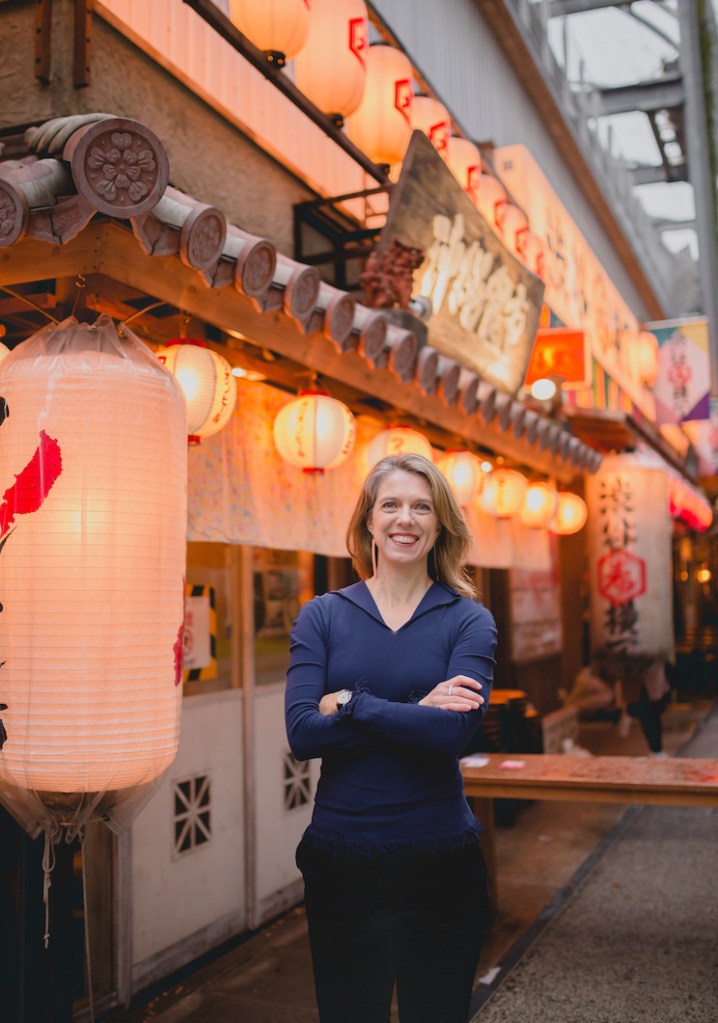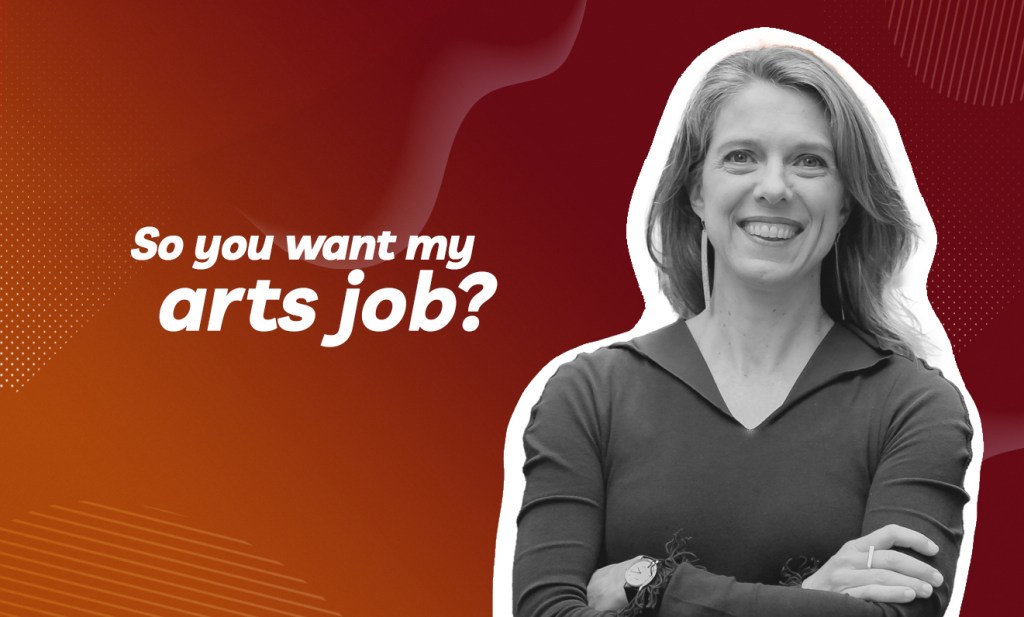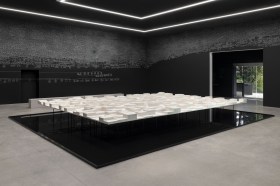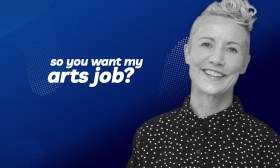Art Tour Leader Kathryn Hunyor is Director of ArtsPeople, a company of cross-cultural consultants, who bridge creative connections between Japan and Australia. She describes it as an ‘arts company meets arts consultancy’.
As a fluent Japanese-speaking curator and lecturer with a Masters degree in Japanese literature, Hunyor also works as a creative producer and consultant to some of Australia’s major arts organisations, such as the Sydney Opera House, Sydney Festival and Australian Chamber Orchestra, to assist in producing a range of arts and design projects between Australia and Japan.
Her perspective also places her to be a well-seasoned Art Tour Leader with Renaissance Tours. Her next gig will be to lead a group of art revellers on a 10-day tour discovering Contemporary Art, Architecture and Design in Japan (November 2024).
ArtsHub catches up with Hunyor on what it takes to be an Art Tour Leader, and to ask whether it is as glamorous as the job sounds.
How would you describe what you do to a friend?
I share my love, fascination and knowledge of Japan with others. Or in other words – I’m a Tour Leader for specialist art tours to Japan for Renaissance Tours.
As a curator, I describe it as a ‘two-week public program’ where I create ways to engage with the art and culture of Japan through a range of perspectives.
In reality it feels more like an aesthetic and spiritual adventure with a group of curious people. By the end of the trip, we develop quite an emotional connection and sense of intimacy. It can feel like a new family with whom you’ve been through a transformative experience. Japan tends to do that to people if you let it.
What qualifications do you need for this job?
The Tour Leader is the educational leader of the tour – most tours involve at least three formal lectures in addition to spontaneous commentary – so you need an academic qualification in your specialist subject area. In my case that’s Japanese art, culture and language. I have a Bachelor of Arts (Asian Studies) and a Master of Arts in Japanese Literature. I’ve also just started a PhD at University of Technology Sydney (UTS) looking at the symbiosis of art and business in Japan.
You also need to be a confident public speaker, quick-on-your feet with explanations and generally enjoy being with people. I could talk Japan with anyone all day long, so I never realised this was actually a skill until other colleagues commented that they would find it too exhausting!
How did you get your start in this career?
After working for 20 years in the arts sector between Australia and Japan, I started a niche consultancy ArtsPeople. I met up with Liz Gibson from the Art Gallery NSW Society to talk about her career and get some advice. Halfway through the meeting she suddenly said, ‘I know! I’m going to invite you to curate a tour to Japan!’
I followed up with ideas for itineraries that combined contemporary and traditional arts and culture. The aim was to appeal to art gallery members that may have been to Japan before, but wanted a fresh perspective.
The result was my first tour ‘More than Meets the Eye’. Here, I asked people to leave their preconceptions behind and open their minds not only to the Japanese art, but also to the whole Japanese way of seeing and feeling the world.
How collaborative is this job?
It’s extremely collaborative all the way through the process. At the ideation stage, both the AGNSW and Renaissance Tours give me feedback on my creative ideas, before beginning to work out their feasibility from a travel perspective. Once the tour is ready to go, I travel with a Tour Manager who supports me and the patrons with all the travel logistics and everyday needs. Without that foundational support it’s really difficult for us to enjoy the journey’s intellectual and emotional aspects, which are many!

What’s an average week like?
On tour it’s full-on full-time. From breakfast to dinner you are ‘on’ and working – be it giving a lecture, leading a walking tour through headsets, guiding the group through an art exhibition, getting to know patrons and answering questions about Japan. And that’s when everything goes perfectly smoothly!
It’s non-stop, but very energising and exciting to witness people experiencing Japan. I get to see it fresh through their eyes, which is why I don’t get bored. They notice things I don’t see any more, ask questions I’ve never thought of. It’s never the same tour twice for this reason – plus the fact that seasonal variation in Japan changes the colours and flavours of everything.
One of the key themes of my tours is how art permeates everyday life in Japan, so there’s no time to switch off – art is literally everywhere.
When I’m not on tour I’m constantly reading or on the lookout for new ideas. I’ve created another dozen tour itineraries in my head, so I hope to keep doing this for a while!
What’s the most common misconception about your job?
That I can read maps. I used to try and keep this a secret, but recently I decided it’s best to own up and ask for help. My Japanese tour manager on our recent trip was so lovely and reassured me with a Japanese saying – ‘the gods don’t grant people more than one talent’ – so I took that as permission to wander with the group and wait to be told left or right.
How competitive is this job?
Australians are big travellers so, although there is a lot of demand, there are also many specialists with knowledge of a particular country or subject area who would love the chance to lead a tour. I know most of the other Japan tour leaders and we are the opposite of competitive, often sharing ideas and information. Many of the more senior leaders have been very generous with contacts and ideas from the outset of my touring career.
In an interview for your job, what skills or qualities would you be looking for?
I’d look for someone who can bring their knowledge to life. Especially now with Google, people don’t want you to be an encyclopedia – they want real stories, interesting insights and just the right amount of facts and figures. They want to feel connected to the location that they’re visiting.
A sense of humour is also helpful – things will go wrong, people will be confronted by cultural differences and sometimes personalities will clash. I find humour is a great diffuser and reminds me to stay playful and alive to the world.
So, the main skills are the ability to engage with people, react authentically in-the-moment and occasionally Google something in the bathroom when you don’t know the answer.
What’s changing in your professional area today?
I think audience expectations for how we engage with art are growing exponentially. People are wanting more bespoke, participatory and immersive experiences. They don’t want to passively look at things and be told what to think or feel.
Therefore, as an art tour leader and curator, I’m working more on layered experiences that go deeper and connect my niche expertise to people’s lives.
Read: So you want my arts job: Art Adviser
This is particularly relevant to art tours where patrons are often very well-travelled and well-read, so they need something unique and nuanced to feel satisfied.
What’s the most interesting thing that’s happened to you in this job?
On my first tour we visited one of my favourite pieces of contemporary architecture in Japan, the D T Suzuki Museum in Kanazawa by Japanese architect Taniguchi Yoshio. Dedicated to the life, work and ideas of a Buddhist philosopher, the building is a physical expression of Zen Buddhist ideals.
As I stood contemplating the beautiful Water Mirror Garden with one of the patrons, she quietly burst into tears. She told me she’d lost her sister earlier in the year but hadn’t yet cried. This moment of spaciousness – in Japanese they say ma – offered her the opportunity.
This poignant moment has come to symbolise for me the true power of art.





